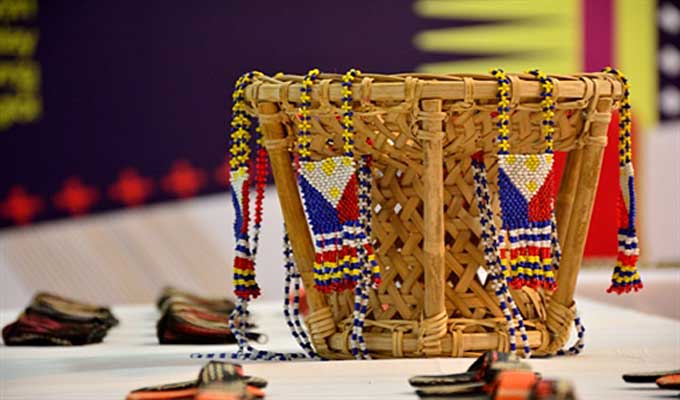An exhibition themed “Traditional and Contemporary: Masterpieces from the Schools of Living Traditions of the Philippines” was kicked off on August 17 at the Viet Nam Exhibition Center for Culture and Arts (Van Ho Exhibition Center), No.2, Hoa Lu street, Hai Ba Trung district, Ha Noi.

The exhibition is part of the activities in celebration of the 40th anniversary of the establishment of the Viet Nam-Philippines diplomatic relations. At the exhibition, traditional craft products such as mat making, basketry, beadwork, etc. are on display.
The word “traditional” refers to things produced, done or used following long-established ways. “Contemporary” means happening at the moment and marked by characteristics of the present period. The two are rarely used together to describe the same thing. Yet methods and means in the Schools of Living Traditions are both.
Schools of Living Traditions (SLTs) aim to safeguard the country’s intangible cultural heritage through the transfer of knowledge, skills, and meanings from one generation to the next. The traditional methods as embodied by the cultural masters are taught to younglings with hopes to keep alive what seems to be dying.Some experimentation has also been done, giving way to new forms of expression.
Mat making
Subtle innovations in the intensity of dyes used and in color schemes may be seen in recent mats but the changes are not confined to the products alone. Some SLTs engaged in mat weaving have not only put aside gender-typing but religious barriers as well. Not only are men now taught to practice the craft alongside women, at some Palawan SLTs for example, non-Muslims are welcome to train as well.
Basketry
Basketry is associated with agriculture. It is not surprising to find the craft most alive in places where traditional crops are still robustly grown. The Subanen SLTs for example can boast of both the complicated bhelenghat and an astounding number of rice varieties.
Beadwork
Beadwork used to be practiced only by women in ancient times. In some of today’s SLTs, gender roles have been relaxed and men have begun to create their own pieces. At the Malaybalay Bukidnon SLT for example, men are observed to be even better at the craft.
Textile Weaving & Garment making
All Filipinos perceive artistic value in laborious, intricate work. Hence the enthusiasm for the painstaking charm of cloth made with a back-strap loom among many SLTs.
For many groups re-producing the community’s ceremonial wear is a vital undertaking. This is especially true for the various SLTs which have chosen to focus on traditions that are performed - musical ensembles, dances, chanting and rituals. Costume-making in the SLTs does not restrict itself to the dictates of history. In the Bagobo SLT of Tungkalan, Toril District Davao city, the master allowed her students to experiment so that today one can find flowers, butterflies and leaves in their umpak.